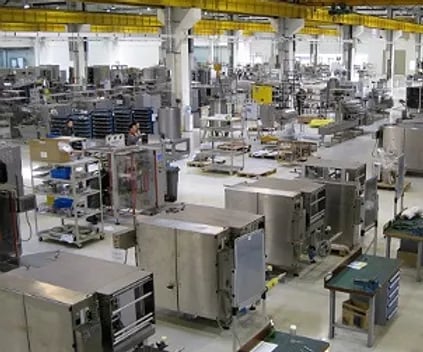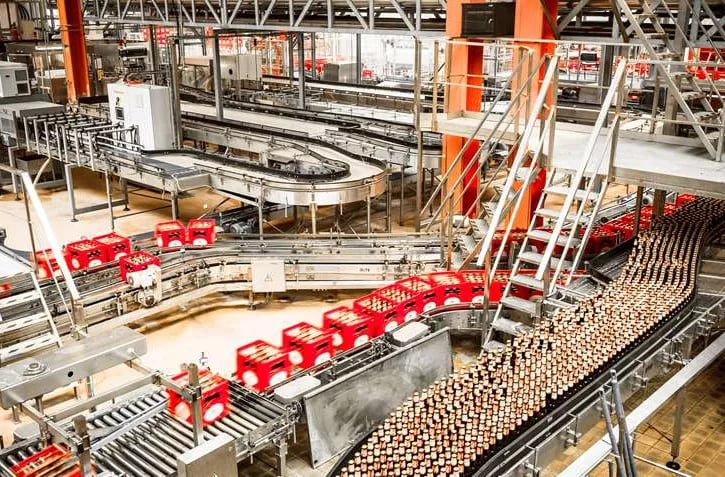Industrial air cleaners for packaging machinery plants

What we did:
Pure Skies pollution control equipment reduced PM2.5 and PM10 about 73% and 74%, respectively, at a packaging machinery plant.
The problem:
One of Devic Earth’s customers is a pharma machinery major. Of their four plants, they were particularly concerned about the health effects of air quality inside one of their plants in central Mumbai, covering approximately 10000 sq. ft. in Mumbai.
The manufacturing facility fabricates automatic machines for the processing and packaging of pharmaceuticals, cosmetics, and beverages. Processes such as welding, metal cutting, and metal buffing lead to high levels of particulate pollution inside the plant.

A busy plant manufacturing packaging machinery and other equipment for the pharmaceutical industry. PC: The Free Press Journal.
Other sources of pollution include neighboring factories in the industrial zone in which they are located, as well as vehicle emissions from the adjacent highway.

Busy traffic on a Mumbai highway just outside our client's property. Vehicle emissions for hundreds of thousands of vehicles passing by per day added to their pollution woes. PC: The Free Press Journal.
Baseline air quality was measured over a one-week period before a Pure Skies air purifier was installed. Levels of particulate pollutants – PM2.5 and PM10 – inside the plant were high: 90 ± 21 µg/m3 and 103 ± 24 µg/m3, respectively. These exceed both National Ambient Air Quality Standards, and are about 5 times higher than the standards of the World Health Organization.
The solution:
One Pure Skies and one high end third-party air quality monitor from Kaiterra (Sensedge, Kaiterra Pvt. Ltd, Delhi).
Equipment were installed on platform mounted on support beams within the factory. No plant floor space was required for installation. The air quality monitor was placed about 50 m away from the Pure Skies unit.
Installation took just a few hours to complete. Apart from the platform, only ordinary 10A power outlets were required.

The outcome:
Within the first month of Pure Skies being turned On, the PM2.5 and PM10 levels reduced by 43% and 44%, respectively (Figure 1).
Over the next 3 months, these levels were further reduced by 73% and 74%, respectively, as compared to the baseline. These benefits have been sustained over the past year.
_edited.webp?width=460&name=2020-05-12%20(7)_edited.webp)
Figure 1: 24-hour Average PM2.5 & PM10 levels at pharma machinery manufacturing plant in Mumbai: The red and green bars represent the 24-hour average levels of PM2.5 & PM10 in μg/m3during the Pure Skies-Off (1-week of baseline) and Pure Skies-On periods, respectively. The successive green bars depict the incremental decrease in the levels of the pollutants over 1-month intervals. Source: Third party air quality monitor (Kaiterra Pvt. Ltd.) pre-calibrated against a reference grade monitor.
Unlike air purifiers which use HEPA filters or ESPs, Pure Skies air purifiers use pulsed radio technology in the Wi-Fi spectrum to cover large areas effectively and maintain low levels of particulate pollutants over time. This makes Pure Skies an excellent choice for improving air quality over large indoor spaces.
